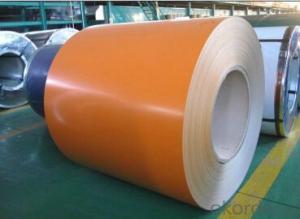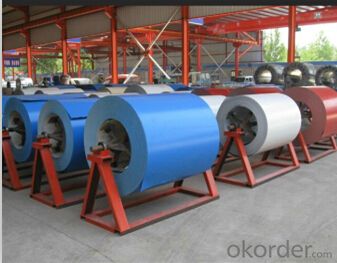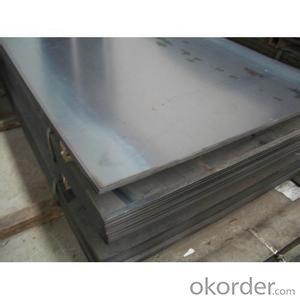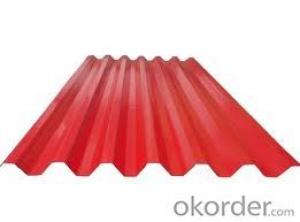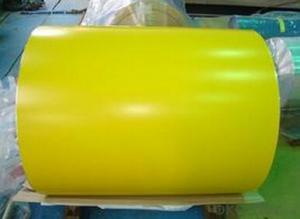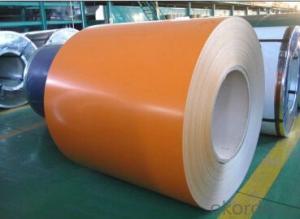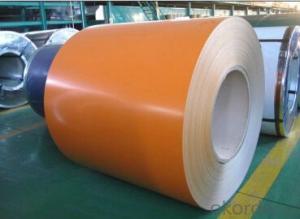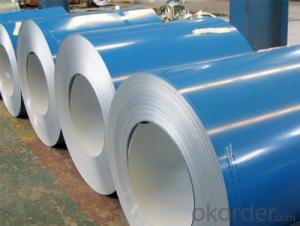Best Prepainted Galvanized steel Coil ASTM 615 SPCCH
- Loading Port:
- Shanghai
- Payment Terms:
- TT OR LC
- Min Order Qty:
- 3232 m.t.
- Supply Capability:
- 2323 m.t./month
OKorder Service Pledge
OKorder Financial Service
You Might Also Like
1.Structure of Prepainted Galvanized steel Coil :
With Gi as base metal,after pretreatmet (degrease and chemical treatment) and liquid dope with several Layers of color,then after firing and cooling,finally the plate steel is called pre-painted galvanized steel ( PPGI) .Pre-painted galvanized steel is good capable of decoration ,molding,corrosion resistance
2.Main Features of Prepainted Galvanized steel Coil:
• Excellent process capability
• Smooth and flat surface
• Workability, durability
• Excellent heat resistance performance
• High strength
• Good formability
• Good visual effect
3.Prepainted Galvanized steel Coil Images
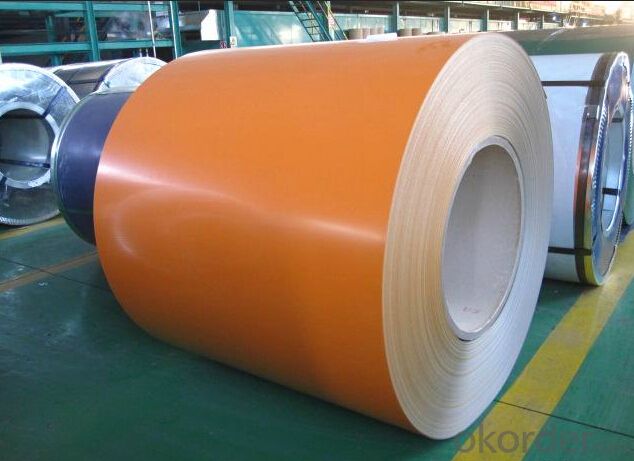
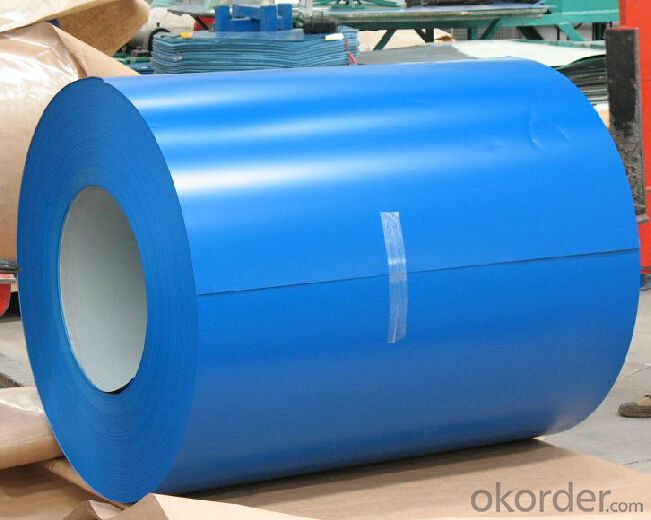
4.Prepainted Galvanized steel Coil Specification
Standard:ASTM, GB,JIS,JIS G3302 ASTM 755 EN10169
Grade: DX51D CGCC CS
Thickness: 0.13mm~3.0mm,
Width: 1250,600-1250mm
Coil weight:3-12 MT
Coil ID:508/610mm
Chemical composition:
C | Si | Mn | Cr | Ni | P | S |
0.150 | 0.476 | 11.231 | 12.50 | 0.900 | 0.039 | 0.010
|
5.FAQ of Prepainted Galvanized steel Coi
We have organized several common questions for our clients,may help you sincerely:
1.How do you control your quality
We have established the international advanced quality management system,every link from raw material to final product we have strict quality test;We resolutely put an end to unqualified products flowing into the market. At the same time, we will provide necessary follow-up service assurance.
2.how long we will receive the goods ?
After receiving your deposit or workable lc ,our normal shipment date is 15-20days,and it takes around 28 days to reach your port of destination. But is up to different destination
3. what is your moq
Normally our moq is 25per size ,but it is up to different size
- Q: Can steel sheets be used for elevator shafts or doors?
- Yes, steel sheets can be used for elevator shafts or doors. Steel is a commonly used material in the construction industry due to its strength, durability, and fire-resistant properties. It provides structural support and enhances the safety and security of elevator systems.
- Q: How do steel sheets perform in terms of acoustic insulation?
- Steel sheets have poor acoustic insulation properties as they are thin and rigid, allowing sound waves to easily pass through them.
- Q: How is the normalized steel plate produced?
- Normalizing, also known as normalizing, is to heat the workpiece between 727 and 912 degrees Celsius. 40~60min, after a period of heat preservation, is removed from the furnace and cooled by air or by spray, spray, or blow cooling. Its purpose is to make grain refinement and carbide distribution homogenization, to remove the internal stress of materials.
- Q: What is the typical hardness range for steel sheets?
- The typical hardness range for steel sheets varies depending on the specific grade and type of steel being used. However, in general, steel sheets typically have a hardness range between 150 and 250 on the Vickers hardness scale (HV). This range provides a good balance between strength and formability, making steel sheets suitable for a wide range of applications. It is important to note that hardness can be further adjusted through various heat treatment processes to achieve specific desired properties.
- Q: Can steel sheets be used for manufacturing jewelry?
- Yes, steel sheets can be used for manufacturing jewelry, particularly for creating durable and unique pieces. However, steel sheets are less commonly used compared to other materials like gold, silver, or platinum, which are more popular in jewelry making due to their aesthetic appeal and higher value.
- Q: Can steel sheets be used in the medical industry?
- Yes, steel sheets can be used in the medical industry. Steel is a strong and durable material that can be easily sterilized, making it suitable for various applications in healthcare settings. Steel sheets are commonly used in the construction of medical equipment, such as surgical tables, medical carts, and storage cabinets. They provide stability and support for medical devices and instruments, ensuring quality and safety during medical procedures. Additionally, steel sheets can be used in the fabrication of medical furniture, such as examination tables and hospital beds, due to their strength and resistance to wear and tear. Overall, steel sheets are a reliable and versatile material that can effectively meet the demanding requirements of the medical industry.
- Q: Can steel sheets be used for water tanks?
- Yes, steel sheets can be used for water tanks. Steel is a durable and strong material that is commonly used for various applications, including water tanks. It provides excellent resistance to corrosion and can withstand high-pressure environments, making it suitable for storing water safely. Additionally, steel tanks can be easily customized to meet specific size and shape requirements.
- Q: Can steel sheets be used for industrial machinery parts?
- Yes, steel sheets can be used for industrial machinery parts. Steel is a commonly used material in the manufacturing industry due to its strength, durability, and versatility. Steel sheets can be fabricated and shaped to meet the specific requirements of machinery parts, making them suitable for various industrial applications.
- Q: What is the weight of each steel sheet?
- The dimensions and thickness of each steel sheet determine its weight. Steel sheets are available in different sizes and thicknesses, resulting in varying weights. To calculate the weight, it is necessary to have the length, width, and thickness measurements of the steel sheet. Once these measurements are obtained, a weight calculator or a steel weight chart can be utilized to determine the weight per square meter or per square foot of the steel sheet. By multiplying this weight by the surface area of the sheet, the total weight of each steel sheet can be obtained.
- Q: Are the steel sheets resistant to vibration or shock?
- Yes, steel sheets are inherently resistant to vibration and shock due to their high strength and stiffness properties.
Send your message to us
Best Prepainted Galvanized steel Coil ASTM 615 SPCCH
- Loading Port:
- Shanghai
- Payment Terms:
- TT OR LC
- Min Order Qty:
- 3232 m.t.
- Supply Capability:
- 2323 m.t./month
OKorder Service Pledge
OKorder Financial Service
Similar products
Hot products
Hot Searches
Related keywords
